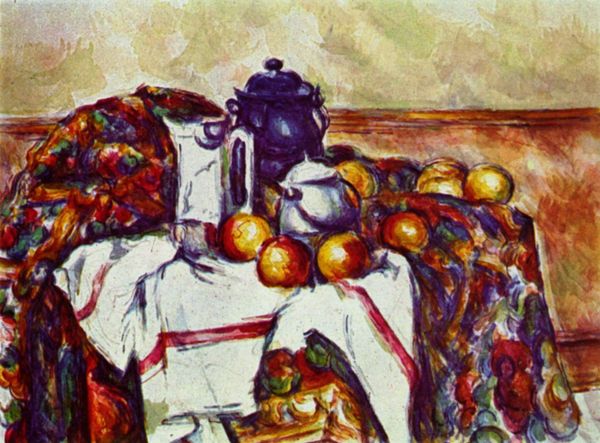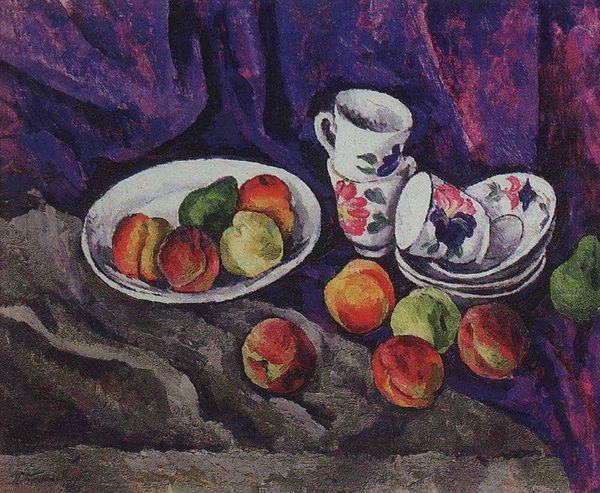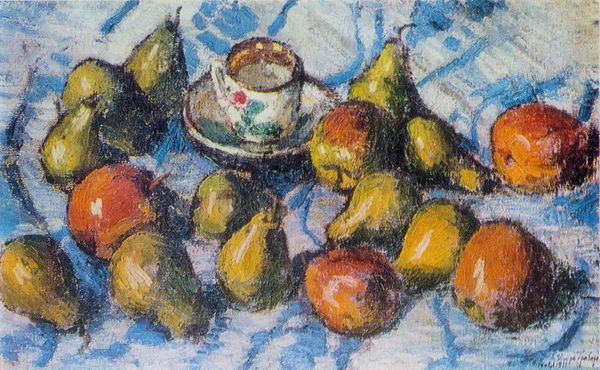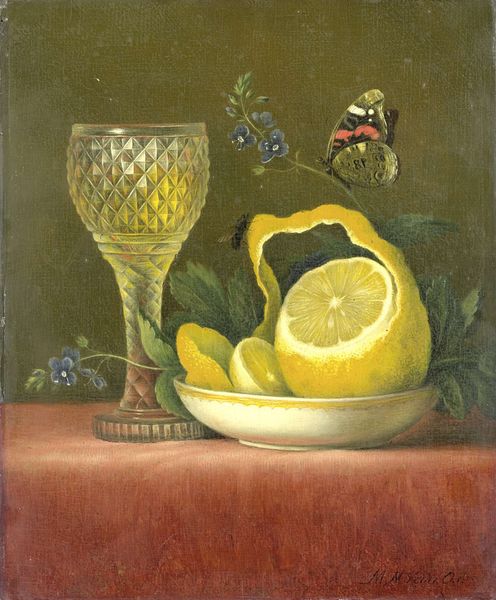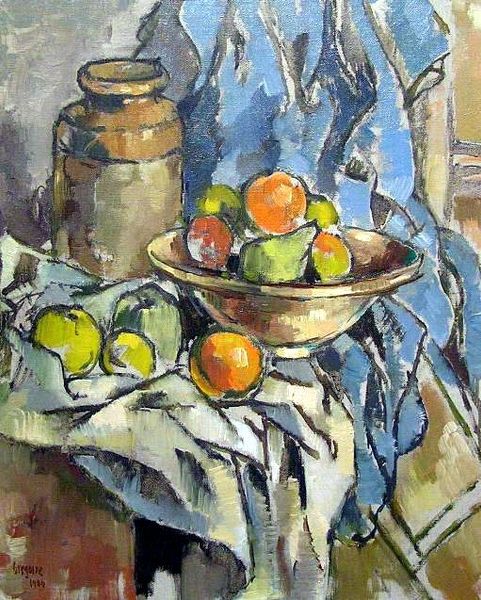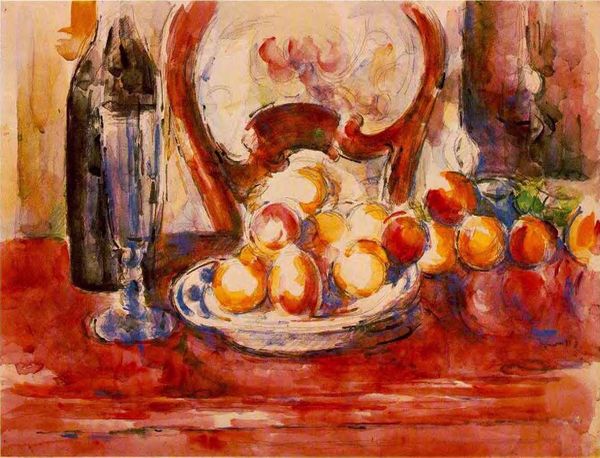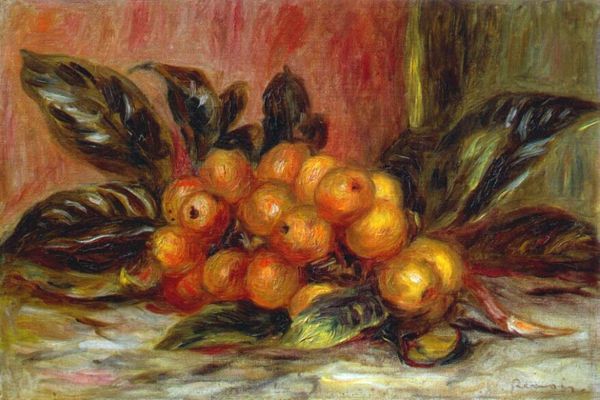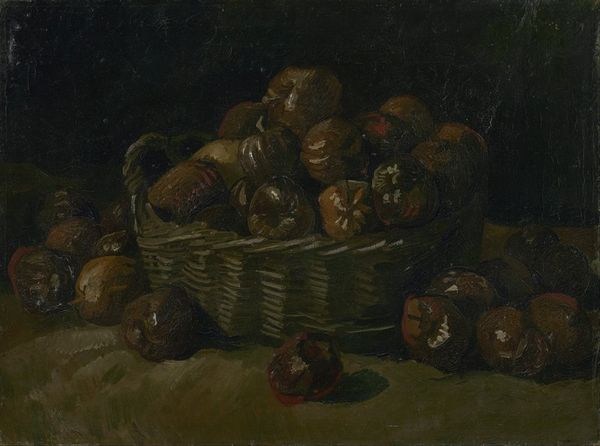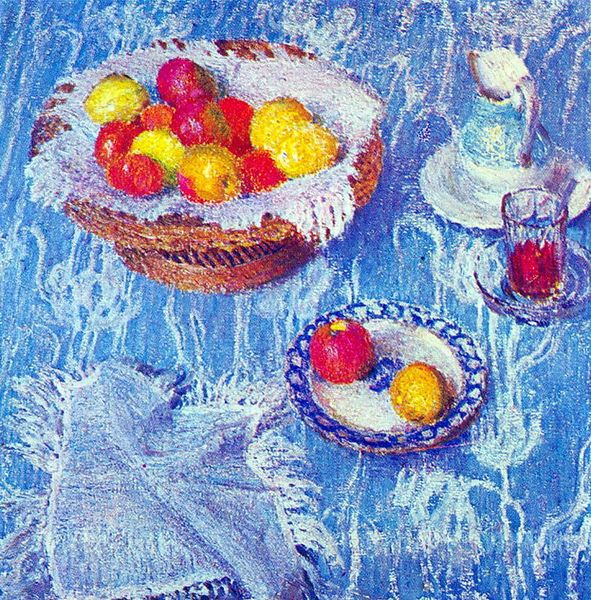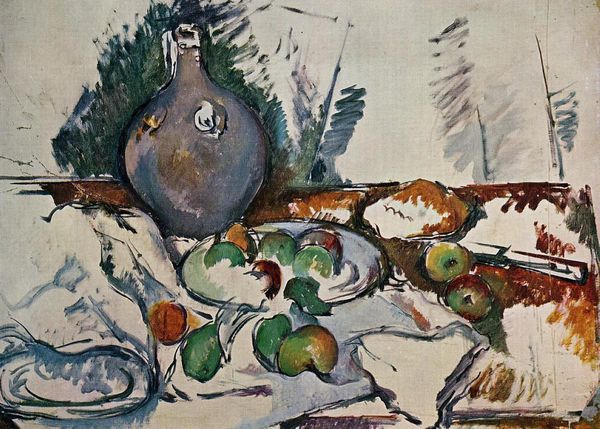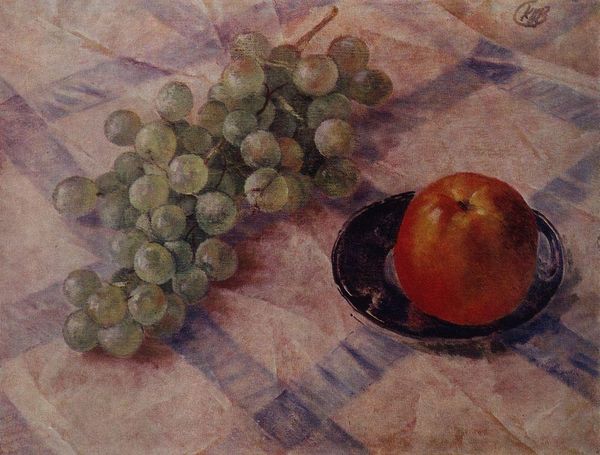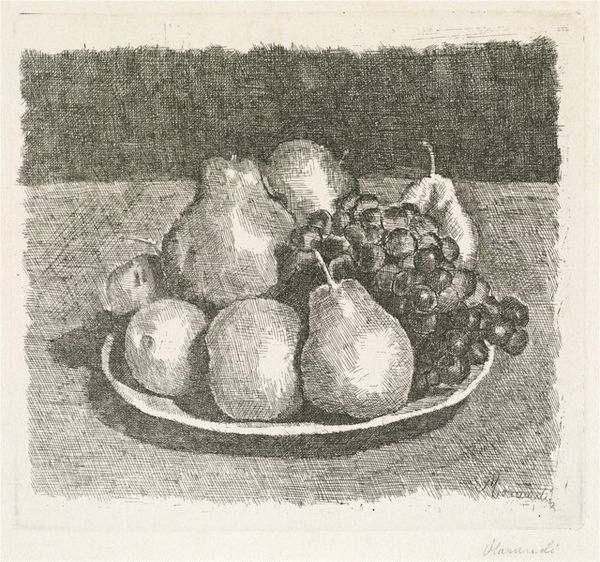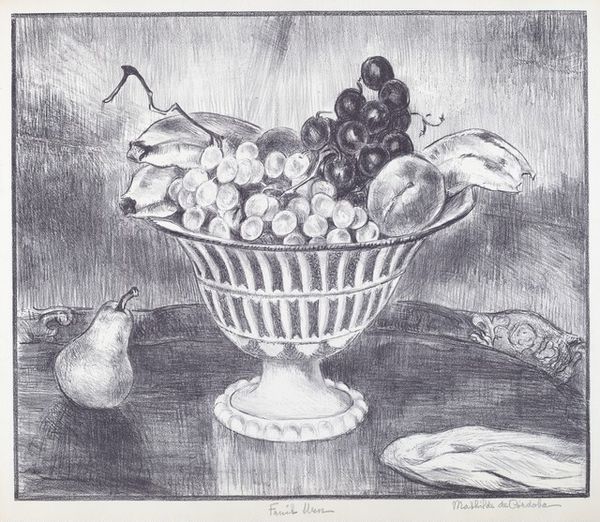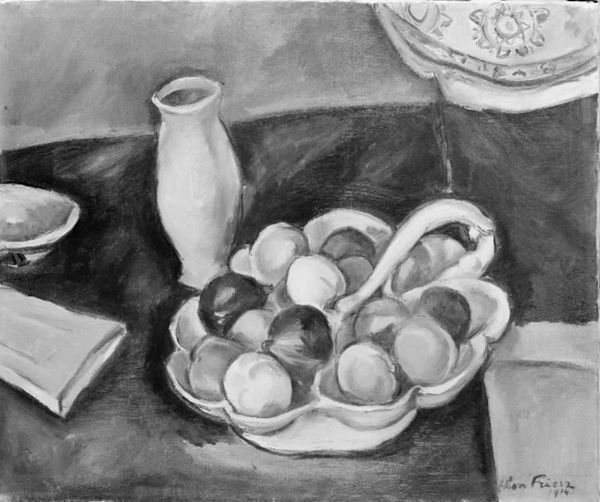
painting, oil-paint
#
still-life
#
painting
#
oil-paint
#
realism
Copyright: Frank Mason,Fair Use
Curator: This painting, "The White Tureen," was completed in 1969 by Frank Mason, employing oil paint in the still-life tradition. Editor: The first thing that strikes me is how heavy and cold it feels, despite the warmth implied by the fruit. It is an interesting paradox between surface appeal and underlying emotional tone. Curator: Yes, and to really unpack the “coldness,” let’s consider Mason's socio-political position as a realist painter in a milieu dominated by abstraction and conceptual art; he's consciously positioning himself against the mainstream, perhaps a silent act of defiance. It also may connect to themes of American affluence amid the burgeoning social movements of the late '60s. Is it highlighting a sense of excess and indulgence during that transformative era? Editor: I'm drawn to the tureen itself; think about the craftsmanship and materials that went into it. Silver wasn’t merely valuable; it signaled a degree of leisure, a class distinction reliant on mining, trade, labor. In its own way, the painting prompts the consideration of historical relations of production made manifest in the finished product. How interesting to use such an antique artifact during the height of plastic consumption! Curator: Absolutely, the juxtaposition with the fruit evokes a powerful contrast too, suggesting themes of ephemerality, decay and consumerism when situated with that long standing tureen; what is preserved and what decays speaks to class structures that elevate one over the other. Consider also the whiteness, what we understand today as part of institutional culture, also found its origin perhaps here, in table settings. Editor: Looking at the drapery too, those deep folds! This emphasizes the interplay of light and shadow that showcases not just the linen's texture but also points us to the art of laundering—women's labor, of course, traditionally—as integral to the display of bourgeois respectability. Curator: This piece asks how those labors serve an art world that, even now, fails to value them adequately. It's not simply a still life; it's a socio-historical inquiry painted with stunning, if somewhat biting, precision. Editor: I'll leave with a material assessment: from that viewpoint, Mason asks the question; “what is rendered valuable enough to depict?” It gives so much weight to surfaces, to a silver patina that occludes and obscures the fruits of somebody’s invisible labor.
Comments
No comments
Be the first to comment and join the conversation on the ultimate creative platform.
